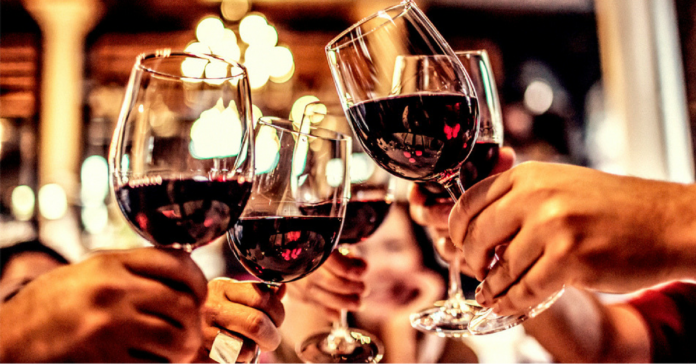Of all the vast number of wine-making areas on the planet, more than half are in areas designated as small towns. When we say, “small town”, it usually conjures up images of dusty, isolated places, not known for much, if anything at all. Not so with the places below, or their wines. The world of wine is one of the few places where small can be big!
Surely, you’ve heard of Napa and Sonoma, but the state of California is loaded with other destination-worthy wine regions begging for attention, too, from the Central Coast’s Paso Robles region to Southern California’s Temecula Valley. Upscale Carmel-by-the-Sea (population: 3,897) in Monterey County is one such locale, a fairy-tale seaside town whose claims to fame include electing Clint Eastwood as mayor in the 1980s and being founded by the same family that now runs one of its premier vineyards, Galente. Here, 18 tasting rooms and some additional bottle shops are squeezed into one delightfully walkable square mile.
Don’t miss Galante’s cabernet sauvignon or the award-winning chardonnay and pinot noir from the family-run Manzoni Cellars. The Manzoni Home Vineyard, in the “Heart of the Highlands,” is an ideal spot to grow world-class Pinot Noir. Here the cool climate is heavily influenced by winds off nearby Monterey Bay. The porous, granitic, shaly loam soils recall this noble grape’s Northern Rhone heritage, stressing the vines, thus providing low, concentrated yields. The 2018 Manzoni Estate Vineyard Pinot Noir, ($35.99), Aromas of dark cherries, blackberry and smoky, spicy oak rise out of the glass. Cassis and hard spices are supported by concentrated red and black berries. In the mouth, this wine has a velvety richness and fine, ripe tannins that support the dense, ripe and concentrated fruit. Salmon, Game birds and Coq au Vin will be even more enjoyable with this one.
Equally big is their Manzoni Cellars North Highlands Chardonnay, ($30.99),is a wine of intense flavors and crisp acidity. Aromas of dense tropical fruits leap out of the glass wrapped in subtle brioche that hints towards uncommon richness and weight. On the palette, this wine is unusually nimble while maintaining the intensity and mouth-feel promised by its exotic aromatics, with flavors of mango, mandarin orange and guava building into a long finish. Any seafood dish, as well as chicken Francaise or Roast Duck in Bing Cherry sauce will intensify all the wine’s flavors and notes.
Australia’s Mornington Peninsula, like much of the country, is a spectacular location; the tiny town of Dromona (population 5,800) is home to Trofeo Vineyards. Their 2018 Trofeo Estate Pinot Gris, Mornington Peninsula, ($29.99), has been aged exclusively in Florentine Terracotta Amphorae. With an earthy nose displaying hints of elderflower and wild rose, this wine offers flavors of pear and honeydew melons with a characteristic front of mouth feel and crisp finish mid palate. This wine has beautiful balance, complementing seafood, salad or a cheese platter perfectly.
My friend and writer for Travel and Leisure, Richard Semik, says: ”Wine lovers who are weary of the Disneyland-like crowds of Bordeaux and Napa Valley should book a vacation to Jura, which was named one of Travel + Leisure’s Best Places to Travel in 2017. France’s smallest wine region, and possibly its most picturesque, is set among limestone cliffs and spruce-lined valleys, with Switzerland to the east and Burgundy to the west. This sleepy, medieval-era enclave managed for decades to fly under the radar as its residents quietly perfected wine- and cheese-making.” Jean Rijckaert Cote du Jura, Les Sarres Savagnin, 2016, ($38.99),displays complex aromatics, with a mix of fresh almond, green apple, white pepper and citrus. On the palette, there is great roundness with some light spicy notes and aromas of quince marmalade, citrus zest and white flowers. The great freshness of the finish gives the wine a spectacular length; you’ll love it with salads, cheese plates and other summer fare.
Finally, in Italy, there is a tiny area called Valle d’Aosta: it is Italy’s smallest and least populous region, just one-eighth the size of neighboring Piedmont . It covers a mountainous corner of Italy’s far northwest, where the nation’s borders meet those of France and Switzerland. The beautiful village of Chambave produces a dry white wine from an unexpected source-Moscato grapes. Valle d’Aosta Chambave Moscato Passito is produced from Moscato Bianco grapes (100%), which, after plucking, are gathered and placed on shelves or mats to dry. This is the same grape used in the drier Valle d’Aosta Chambave Moscato. The result is an exceedingly aromatic, deep golden wine. Interestingly enough, it’s known for becoming drier and deeper in color after extended aging. The minimum alcohol concentration is 16.5%, and the wine is only released for sale after December 1 of the year following the harvest. It is wine that can be had from its release date, all the way up to 5-6 years. If you’re a skier, you might consider getting a double bang for the buck by sampling the area’s wines and its ski areas at the same time . Bons piste!
Talk To The Wine Guy at jdris8888@gmil.com











